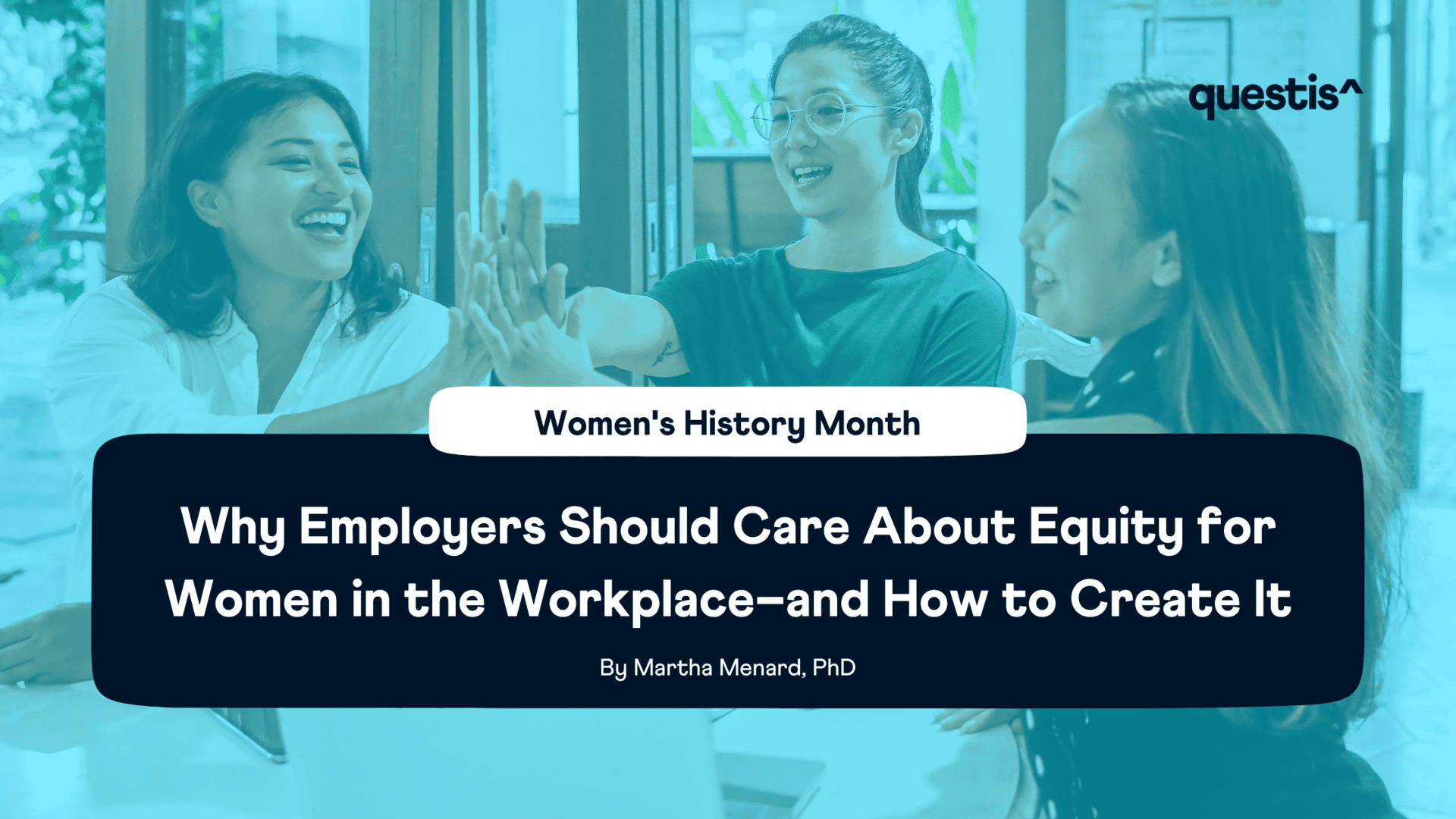As the impact of the COVID-19 pandemic continues to be felt, women are continuing to fall behind financially. As it stands now, we will not see economic gender equality within our lifetime. The gap has increased by multiple generations to 267.6 years, according to the World Economic Forum’s Global Gender Gap Report 2021. While the proportion of women among skilled professionals has continued to increase, overall income disparities are not being bridged. Relatively few women are still promoted into leadership positions, comprising only 27% of all manager positions.
But why should employers care?
Well, aside from basic fairness, here’s one compelling reason: over a twenty-year period, firms with at least one female director or executive officer consistently reported larger profit margins. Another 2016 study of over 20,000 publicly traded companies across 91 countries found that there are two critical factors leading to increased profitability for businesses.
The first is promoting more women into top management positions. The data showed that increasing the percentage of women in top spots from 0 to 30% was associated with a 15% increase in profits.
The second critical factor Is implementing family-friendly care policies that make it easier for women to have children without impeding their careers. Paternity leave in particular was associated with more women remaining in executive leadership positions. As women left the workforce disproportionally during the pandemic, flexible care policies that make it easier to balance work with family life could also make it easier for them to return.
Having more women in upper management roles and instituting policies that make it easier for them to stay there is good for individual businesses and for the economy as a whole. Other ways that employers can support equity for women include:
- Pay equity. Compensation should be based on the responsibilities associated with the position and performance, and not on salary history, gender, race, age, religion, or sexual orientation. Requiring salary history perpetuates pay inequality because women have historically been underpaid and still make .83 to the dollar on average compared to men, even in highly compensated fields. Women of color have suffered even more from the gender wage gap. Without pay equity, people are more likely to leave for better-paying positions where they will be treated fairly.
- Equal access to training and career opportunities. Mentoring and career progression programs should be open to women as well as men. That’s essential to help build a pipeline of women who are prepared to step into management roles. Otherwise women will seek out companies that offer better professional development and career opportunities.
- Benefits that support the needs of all employees and their families. Offering the flexibility to work from home or adjust work schedules helps both men and women take care of their children or older family members without having to sacrifice their careers.
- Taking advantage of existing diversity within the company. Research shows that inclusive teams make better business decisions up to 87% of the time. Teams with less diversity are more likely to make poor choices for their organization. Include more diverse employees in making decisions at all levels.
What’s the business case for equity for women in the workplace? Companies that support gender equality are simply more profitable. According to McKinsey & Company, companies with low rates of both gender and racial diversity are 29% more likely to make less money. Moreover, businesses that show a commitment to gender diversity tend to attract and retain better talent. Although more companies are paying lip service to gender diversity as a top priority, if that isn’t reflected in the companies’ culture and policies it will impact employee job satisfaction. A disconnect between words and actions will erode trust and discourage both men and women from remaining with the company.
The bottom line is that gender and racial diversity is a competitive advantage, enabling growth and profitability. It’s not only the right thing to do, it’s just good business.
About the Author

Martha Brown Menard, PhD is a behavioral research scientist and director of financial coaching for Questis. After a career in integrative healthcare, she is pursuing her passion for helping others become financially healthy. An award-winning researcher and practitioner, Dr. Menard is a guest lecturer at Georgetown University and is the author of a textbook, Making Sense of Research. She is a member of the Association for Financial Counseling and Planning Education and the Financial Therapy Association.
About Questis
Questis transforms businesses into life-changing employers by helping employees solve the root causes of financial stress through innovative technology and unbiased coaching. By providing employees with the tools and resources they need to reach their financial goals, your company will pave the way for equitable opportunities. Contact us today to learn more.
